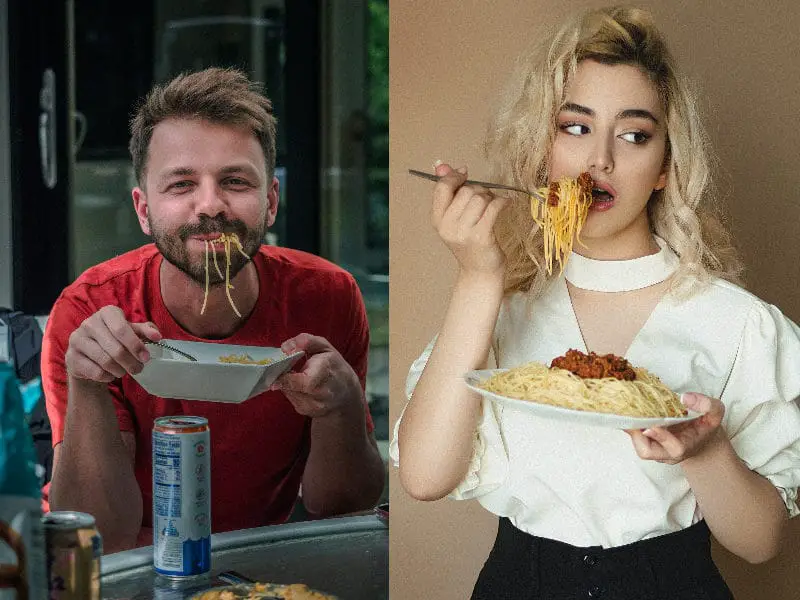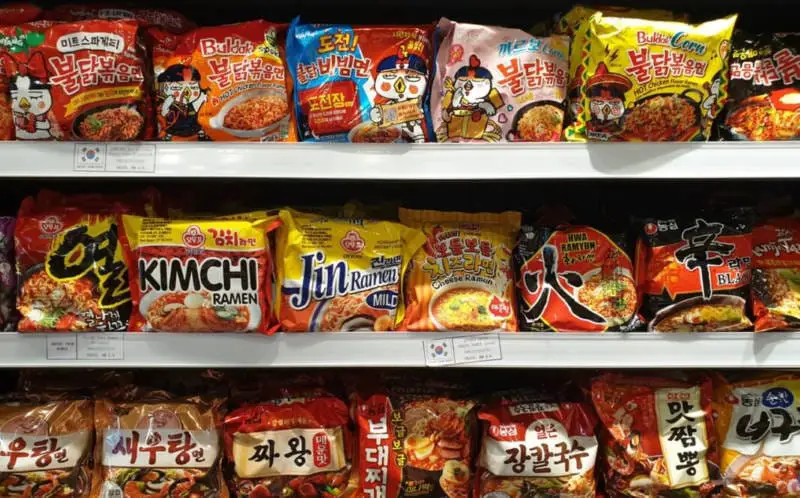Noodles come in all shapes and sizes. From instant ramen to Udon and Soba, all the way to Italian pasta-style noodles like Vermicelli and Macaroni. Loved by many as a comfort food or as part of a classy restaurant dish. But can you eat noodles with braces?
Can You Eat Noodles With Braces?
Luckily for you, you can definitely eat noodles with braces. In fact, noodles of all shapes and sizes make for great braces food. Most pasta or noodles after cooking are very soft, don’t require big bites with the front teeth, aren’t really chewy, and aren’t staining or too sugary.
There are a few things to know about eating noodles with braces to make your life easier and avoid pain. A big problem with eating noodles while wearing braces is they are very easy to get stuck in your braces. You want to avoid this so you don’t bend a wire and for general tooth health. Read our top tips!
How To Eat Noodles With Braces
Eating Noodles With Braces Tip #1
Cut noodles up before you eat them. The easiest way to do this is to break the blocks of dried noodles up into smaller blocks than normal before cooking, or cutting the wet noodles in the pan as they cook. You can cut them up after we just find it easier to do in the pan.
Also, don’t eat big mouthfuls of noodles. Too big a bite risks the food bunching up too much and bending a brace wire, or long strings of noodles getting caught up in your braces. You’ll probably also find it painful to eat big mouthfuls after a wire change.
Eating Noodles With Braces Tip #2
Chew at the back of your mouth and try not to cut noodles with your front teeth. If you’ve cut up the food properly you shouldn’t have to cut it, but if you do try and use the middle or back teeth instead.
Eating Noodles With Braces Tip #3
Use a water flosser to remove debris shortly after eating. Eating noodles with braces means being ready to deal with strings of food stuck in braces. If you don’t cut them up enough this is going to be a big problem. If you don’t have a water flosser with you make sure you swish water around your mouth to rinse out the bits, then use a small interdental brush you can keep with you.
Eating Noodles With Braces Tip #4
Brush your teeth 30 minutes after eating. This is something you should always do after eating but not immediately. Sugary and acidic foods can temporarily soften tooth enamel so it’s advised by dentists to wait a little. With noodles, you’ll almost certainly have something stuck in your braces or teeth after, so rinse first and brush shortly after.
What Is The Difference Between Pasta & Noodles

We’re going to use the term noodles for many styles of pasta-like foods. While there are distinct styles and differences that we totally respect – many people use the term “noodles” for all types of Italian pasta, not just the stringy ones. We’ll mostly be talking about the long, thin styles but really a lot of this advice goes for both.
Most Italian-style pasta is made with durum semolina (a form of durum wheat midway through the milling process, before it becomes flour) – Some Asian-style noodles are made with common wheat flour at a finer grade than durum. However, that’s not always the case.
Asian-style noodles also use durum, some use rice flour, eggs, buckwheat, mung beans, or rice. There are many varieties. Some Italian pasta uses egg, and nowadays even peas, beans, and quinoa. Most Asian noodles are made with flour that’s rolled out and cut, while Italian pasta is generally extruded with a hand mill. However, sometimes this switches, and both can be hand-pulled apart like this.
Love Italian foods and other shapes of pasta? – Read Can You Eat Pasta With Braces?
Can You Eat Ramen Noodles With Braces?
Yes, ramen noodles are safe to eat with braces. They’re not the healthiest option for a snack but they are the savior. That being said, Ramen are notorious for getting stuck in braces – so do all you can to not eat long strings of them.
Break the hard block into many small chunks before cooking, or cut them up in the bowl before eating. If an annoying stringy bit is stuck in your braces, just wait and rinse it out over a sink instead of being tempted to yank it out and bend a wire.

All of the brand-name instant noodles like Cup noodles, Shin Ramyun, Pot Noodle, Koka, Indomie, and Nissin are all OK to eat while wearing braces too. Chicken noodle soup is also a great soothing braces food.
Can You Eat Spicy Noodles With Braces?
Spicy food is fine to eat with braces so spicy noodles are still on the menu. Watch out if you’ve just had an extraction as spice can irritate the fresh wound. You should also avoid foods with food colorings to help with the “spicy look” if you have clear or light-colored braces rubber bands or clear braces
Can You Eat Stir Fry With Braces?
Stir-fried noodles are great to eat with braces – though sometimes can be a pain if you don’t cut things up. Watch out for what you have in them though. Big chewy lumps of meat are a bad idea as well as anything you need to cut with your front teeth. Tofu and vegetables are good as they are soft, whereas beef is probably a bad idea.
If you are cooking, chop the ingredients up small than usual. If you are eating out ask for a knife and fork so you can cut up the pieces and noodles yourself. Braces can require a little extra hard work to deal with but they are worth it in the end.
Read more – Can You Eat Sushi With Braces?
Can You Eat Spaghetti With Braces?
Yes, all types of pasta noodles are safe to have with braces. Pasta in the form of spaghetti, linguine, vermicelli, tagliatelle, fettuccini, and so on are all fine to eat with braces. As with Asian-style noodles, you should cut the pasta up so long strings don’t get caught in your braces.
Can You Eat Pasta Noodles With Braces?
Pasta noodles like the above are all fine to eat with braces. “Noodles” as in the colloquial term for many types of pasta is also fine. So things like ravioli, macaroni, penne, rigatoni, and tortellini are perfect. All the classic shapes are a good choice to eat with braces though avoid “al dente” cooked noodles (cooked still firm) and cook a minute longer than normal for a softer bite.
